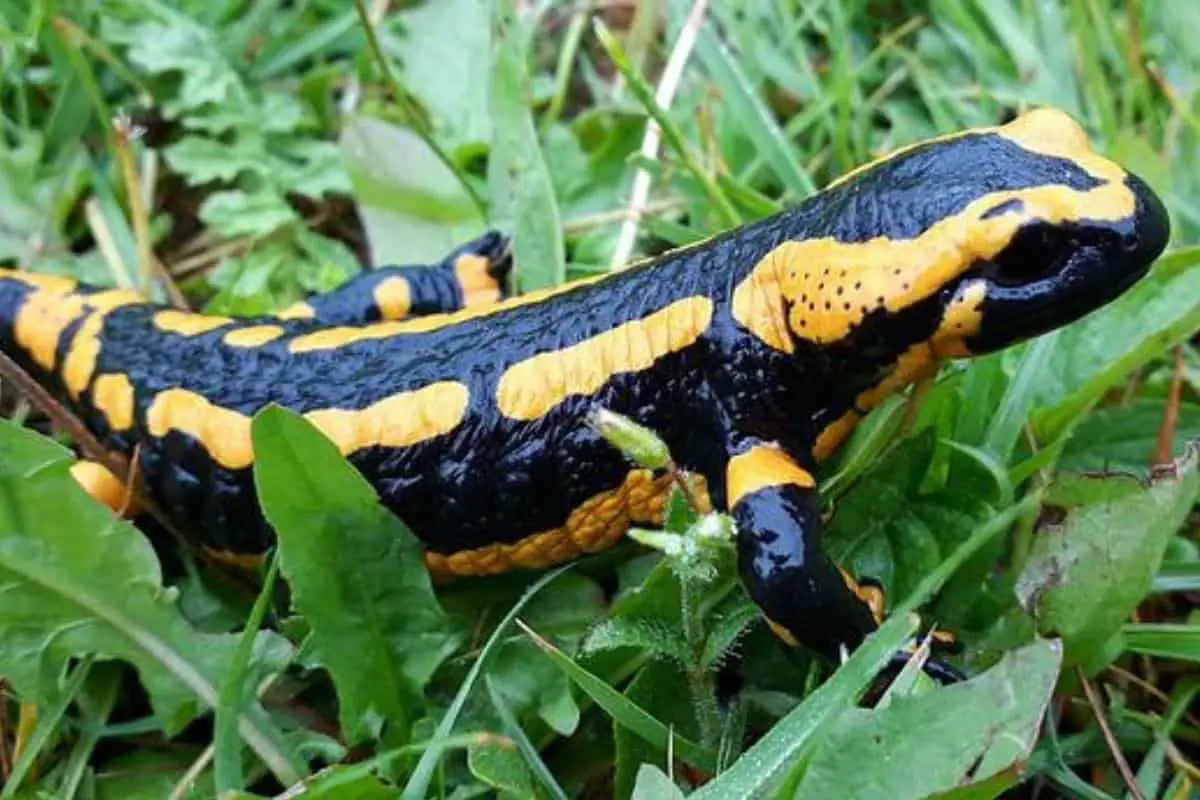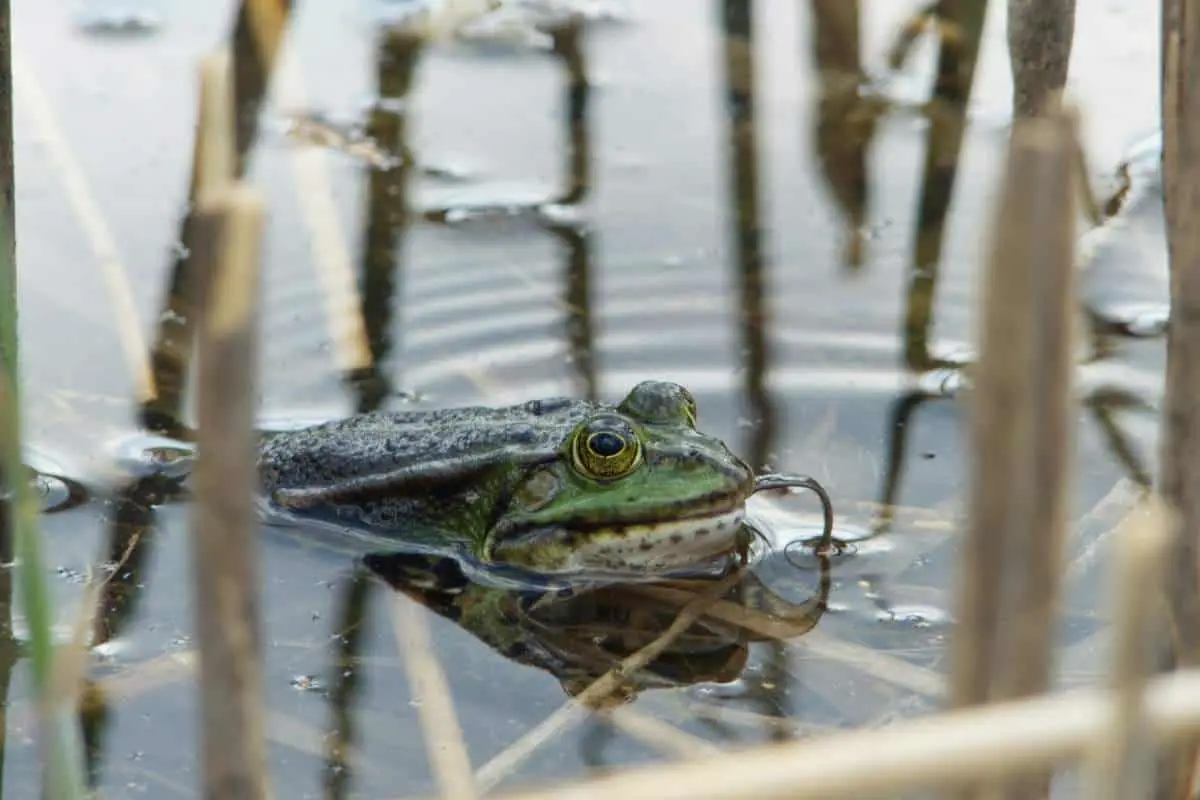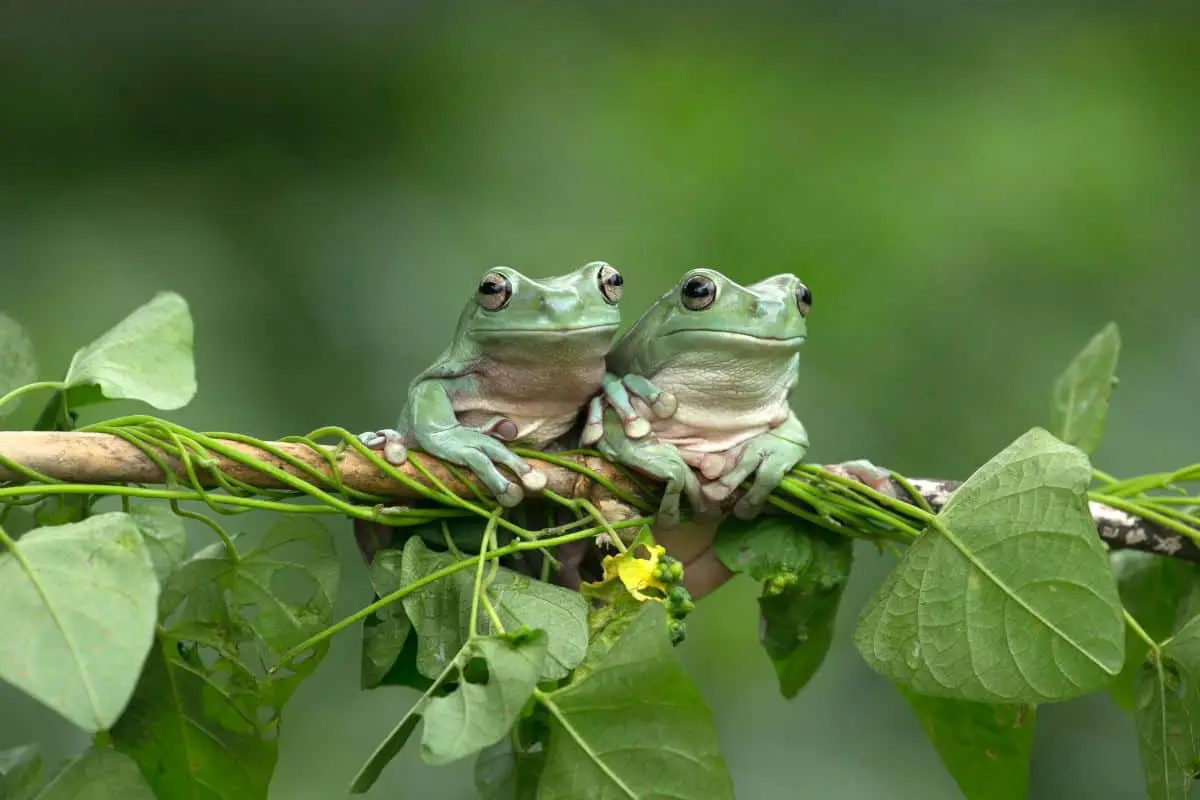Although salamanders are often mistaken for lizards, they’re actually amphibians, not reptiles. Salamanders typically make their home along bodies of water, and some species of salamander are even fully aquatic! There are over 60 known species of salamanders in North Carolina, which means it’s home to more salamander species than any other state!
The 12 Most Common Salamanders In North Carolina
While you can find many types of salamanders in North Carolina, these are some of the most commonly-seen species in the Tar Heel states. Watch for these salamander species the next time you’re near North Carolina’s waters.
1. Dusky Salamanders
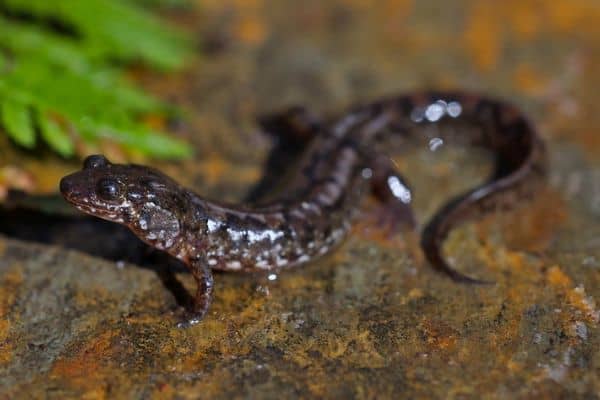
This small, stocky salamander can be found in many colors, including olive, reddish-brown, and gray. These salamanders are typically spotted but may have mottling along their sides.
The dusky salamander likes to hide in burrows along the edge of the water to avoid predators. Since this salamander has no natural defense mechanisms, it spends most of its life in hiding.
2. Black-Bellied Salamanders
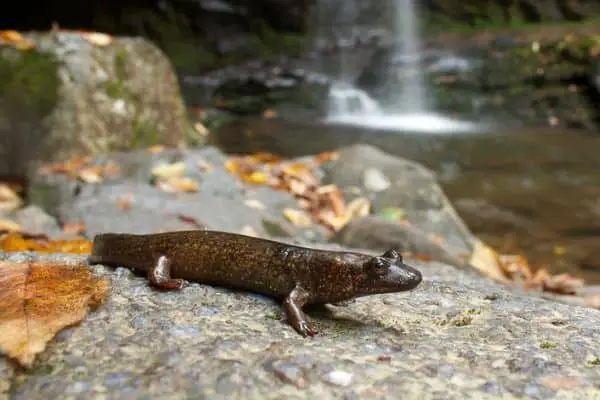
You’re most likely to spot these salamanders in North Carolina’s mountain streams. Even though the black-bellied salamander spends most of its time in the water, it can occasionally be seen on land, especially on wet rocks alongside streams. When these salamanders are in the larval stage, they have external gills, but they lose this feature as they mature.
3. Mudpuppy Salamanders
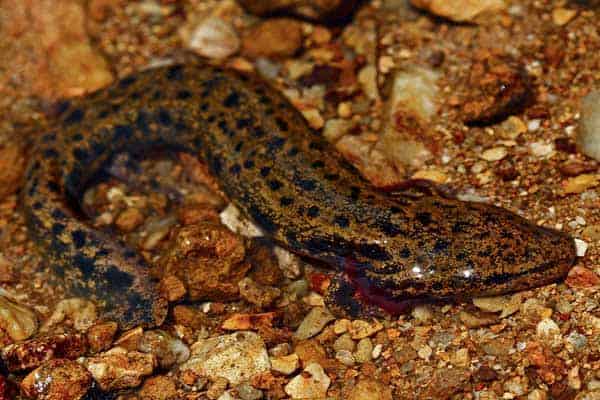
Most salamanders can’t make any sort of vocalizations, but that’s not the case for mudpuppy salamanders! Sometimes referred to as waterdogs, these salamanders can produce a noise that sounds similar to a dog’s bark.
Mudpuppies spend their entire lives in the water and are usually found at the bottoms of rivers, lakes, and ponds. You can also find mudpuppy salamanders living in reservoirs.
4. Red Salamanders
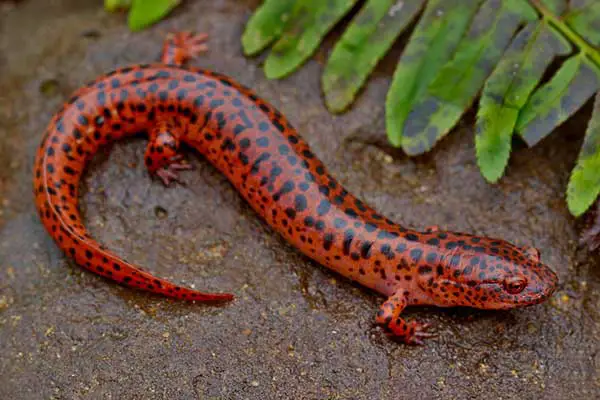
It’s easy to spot this salamander thanks to its bright orange or red skin. Red salamanders are covered in black spots and able to breathe through their skin.
This salamander has a varied diet that includes earthworms, snails, and even other, smaller salamanders! They typically live in rivers, small creeks, and ponds.
5. Spotted Salamanders

The spotted salamander is a mole salamander, which is an advanced group of salamanders that are known for having wide, protruding eyes.
These salamanders live near bodies of water, but spend the majority of their time underground. After it rains, they venture above ground to forage for food or breed Spotted salamanders like to eat slugs, snails, and insects.
7. Red-Spotted Newts
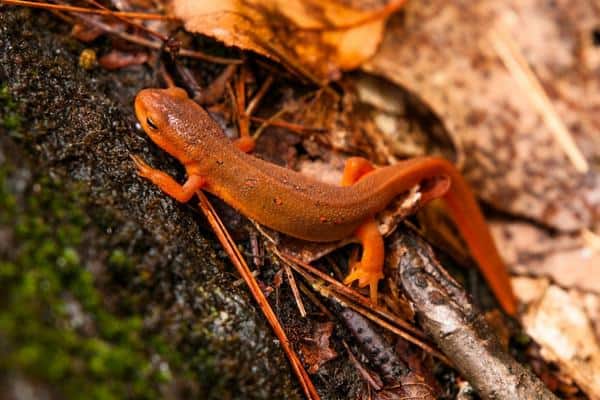
Many people assume that salamanders and newts are different animals, but newts are actually a type of salamander! The red-spotted newt gets its name from its bright red color, but it can actually change color as it ages. Some mature red-spotted newts are yellow or green. This newt produces a toxin that keeps it safe from predatory fish.
8. Seal Salamanders
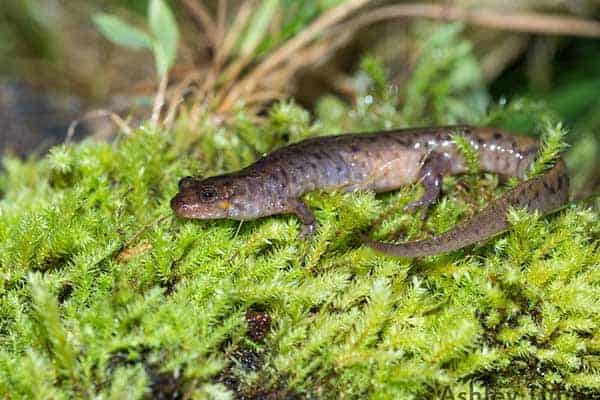
Sometimes called stream salamanders, these nocturnal salamanders spend almost all of their time in the water. Since adult seal salamanders have no lungs, they absorb oxygen directly through their skin. You can often find these salamanders hiding beneath rocks, especially along the edges of rivers and streams.
9. Hellbender Salamanders
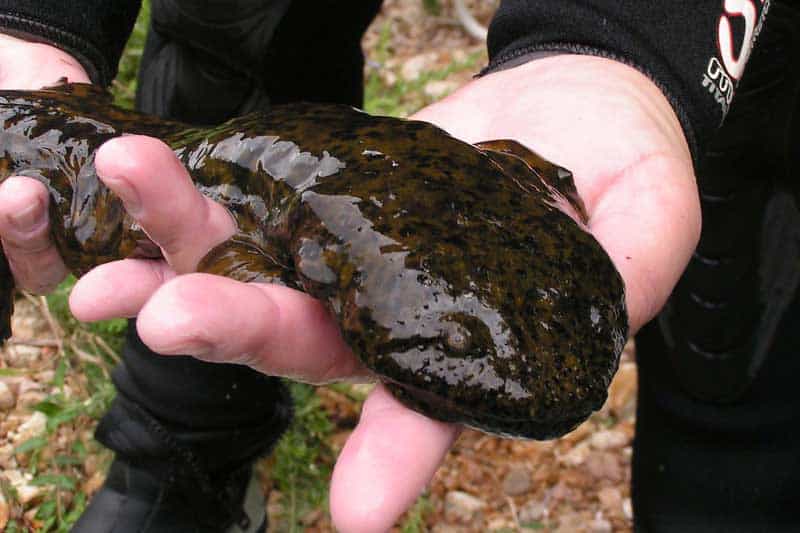
This aquatic salamander is the largest species of salamander found in North Carolina and North America! While it can grow to be as long as 30 inches, most hellbender salamanders are between 12 and 15 inches long.
It’s rare for the hellbender salamander to leave the water, which means it almost never has to use its lungs. The size of this salamander makes it easy to spot, but it also has distinctive features, like a flat head and lidless eyes.
10. Red-Backed Salamanders
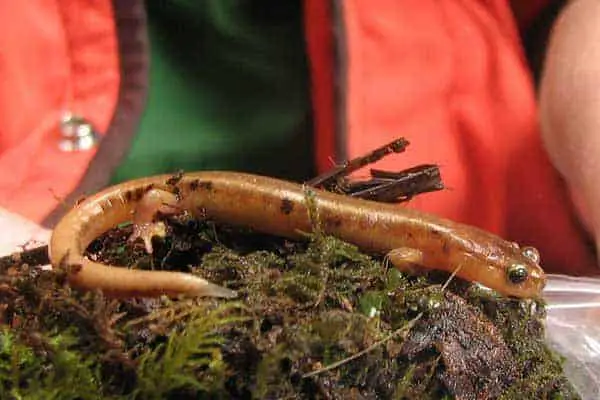
These small woodland salamanders get their name from the stripes along their backs, which are usually bright red or orange. When these salamanders are under threat, they’re able to detach part of their tails from their bodies in order to avoid predators.
Since red-backed salamanders don’t have lungs, they can only survive in damp environments. This is a territorial species of salamander that will mark its habitat with its scent.
11. Blue-Ridge Two-Lined Salamanders
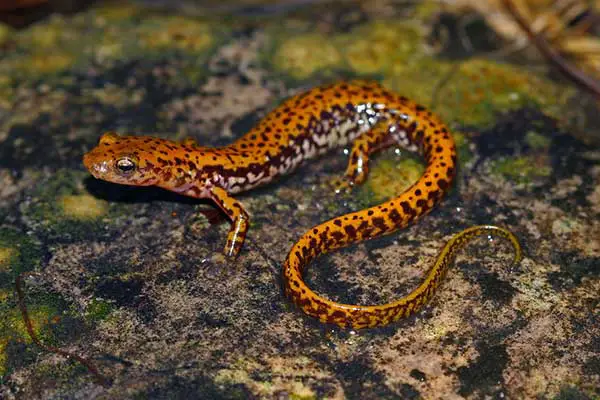
The blue-ridge salamander is almost exclusively found in the waters around the blue-ridge mountains, which is where it gets its name. During its breeding season, which spans from later winter to early spring, it spends most of its time in the water, but it spends the rest of its time on land. Salamander hatchlings spend about two years as fully aquatic larvae before they reach maturity.
12. Marbled Salamanders
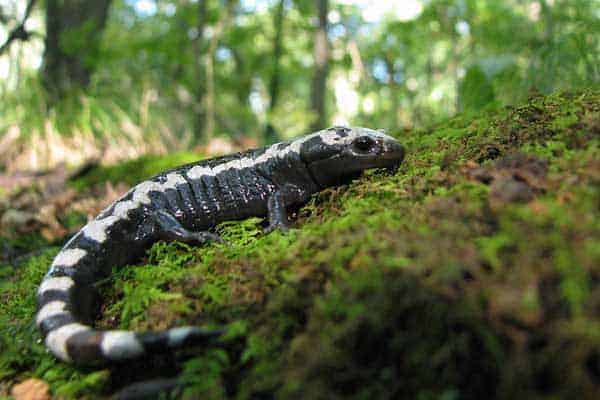
The marbled salamander is known for its stock body, which is covered in bold bands. These salamanders are commonly seen throughout North Carolina and are recognized as the official state salamander. To protect themselves against predators, marbled salamanders have poisonous glands, but this toxin isn’t usually harmful to humans.
